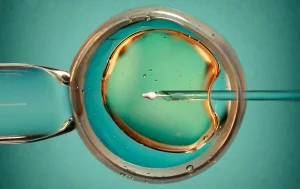For many American girls (and quite a number of American boys, too), playing with Barbie dolls is one of the defining moments of childhood and pre-adolescence. Until she’s outgrown and replaced with more sophisticated playthings, Barbie can act as a medium through which a child’s imagination and skills for interaction with peers and with the world at large develop. While Barbie is able to fulfill these functions in a child’s developmental life, she can exert a great deal of influence on it at the very same time. She is a doll fashioned in the image of a woman, after all, and the majority of children who play with Barbie dolls will grow up to be women themselves. Problems arise when the image of beauty she inevitably promotes- long-legged, extremely thin, and voluptuous, to name a few of her physical traits- becomes the benchmark by which children who play with Barbie dolls judge physical beauty and self-worth. Not everyone can adhere to that particular standard of beauty and, frankly, not everyone wants to.
The problem still remains, however: how does one mitigate the detrimental effects on body image this doll has the potential to produce on impressionable young minds? The folks over at Plus-Size-Modeling.com, a lifestyle blog geared towards women of all sizes and shapes, seem to think that there should be more options to choose from when it comes to Barbie’s body type. This past December, Plus Size Modeling’s Facebook Page released a picture depicting their conception of a fuller-figured Barbie, which can be viewed by following the link to their page. They ask: “Should toy companies start making Plus Size Barbie dolls? ‘Like’ = yes, absolutely! Comment = No, bad idea.”
The picture has stirred a large amount of controversy, and has received equally copious amounts of ‘likes’ and comments expressing negative opinions. Those who think that this iteration of “plus-size Barbie” is a bad idea seem to primarily take issue with the fact that the picture does not depict a “full-figured” Barbie, but rather a “morbidly obese” one. The biggest bone of contention is the number of “chins” the doll has. In the words of one commenter: “love the fact of having a realistic and curvy doll, but way too many chins is non realistic, it makes us plus size women seem obese and unhealthy.” Another commenter agrees that a fuller-figured doll would be desirable, but that the “triple chins” are “horrible” and “ridiculous” and “promote obesity”. As these comments can attest to, a major concern for commenters is the idea that a Barbie with this figure would promote overeating and obesity amongst the children who would be playing with the doll.
Thousands of other opinions like these ones indicate that, for the majority of commenters, there exists a spectrum of what is acceptable when it comes to Barbie’s figure: at one extreme, there’s conventional Barbie and at the other, there’s Plus Size Modeling’s version. Neither of these options seem to lie within the acceptable range, so both become undesirable to consumers. Many commenters on the Facebook Page express beliefs that the answer lies somewhere in the middle: “maybe not plus size but maybe average or healthier. cause u can be ‘thicker’ & still be healthy.” While this seems to be the consensus, there is still no word from Mattel, Barbie’s manufacturer, whether any plans for a fuller-figured doll will be set into motion in the near future.
What do you think, dear readers? Does Barbie need to gain a few curves, or is she fine the way she is? If you had to choose between conventional Barbie, “plus-size Barbie,” or a version existing somewhere between the two, which one would you give to your daughter, niece, or sister? We would love to hear your thoughts on this controversial subject, so please feel free to comment below!

















